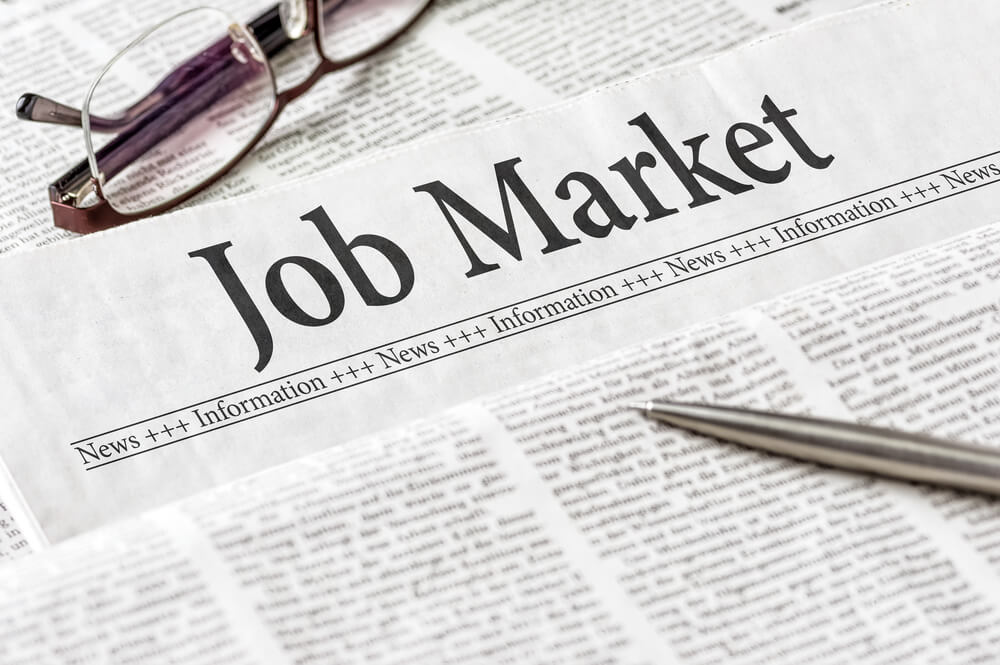The U.S. economy is humming, unemployment is skating near a half-century low and businesses are eager — desperate, in some cases — to hire. And when the government issues its September employment report later today, expectations are high for another sunny picture of the job market.
Economists have forecast that the government will report that employers added a solid 184,000 jobs, according to the data provider FactSet, and that unemployment dipped from 3.9 percent to 3.8 percent, matching an 18-year low.
The Trump administration’s trade fights are unlikely to have had any measurable effect on last month’s pace of hiring and probably won’t until sometime next year, economists say. President Donald Trump has imposed tariffs on imported steel and aluminum as well as on roughly half of China’s imports to the United Sates. Most U.S. businesses will try to absorb the higher costs themselves, at least for now, and avoid any layoffs.
Still, should the tariffs remain fully in effect a year from now, roughly 300,000 jobs could be lost by then, according to estimates by Mark Zandi, chief economist at Moody’s Analytics.
The monthly jobs report provides a wealth of information beyond the number of job added and the unemployment rate. Here are five things to watch in Friday’s jobs report for September:
WILL UNEMPLOYMENT HIT A NEARLY 50-YEAR LOW?
If the jobless rate should fall two ticks to 3.7 percent, it would reach the lowest level in nearly five decades. The unemployment rate hit 3.5 percent in December 1969, after a streak of brisk economic growth had kept joblessness at or below 4 percent for four years.
If the rate keeps dropping, it will heighten two concerns: Has the economy soaked up nearly all the people who want or are able to work? And if it has, will a shortage of workers compel businesses to raise pay quickly and sharply? Higher pay is good for workers and would likely fuel faster growth. But it could also accelerate inflation, which would arouse concern at the Federal Reserve and among stock and bond investors.
ARE MORE AMERICANS LOOKING FOR WORK?
If people who aren’t working are encouraged by steady hiring and pay increases to begin looking for a job, their influx could prevent unemployment from falling further.
Here’s why: The government counts people as unemployed only if they’re actively looking for a job. If more people start looking — and don’t immediately find a job — the government will count them as unemployed. And the unemployment rate could rise or — as other unemployed workers find jobs — stay the same.
For “prime age” workers — those who are 25 through 54 — the proportion who either have a job or are looking for one has crept up in the past year. Yet it’s still below its pre-recession levels. And the rising presence of prime-age people in the job market has been offset by the steady retirements of older members of the vast baby boom generation.
Still, if the prime-age workers increasingly enter the job market, their numbers could expand the workforce a bit and help accelerate economic growth.
ARE FULL-TIME JOBS STILL GROWING?
The healthy economy hasn’t only produced lots more jobs; it’s also allowed people to work more hours.
A rising number of companies are converting part-timers who have wanted more hours to full-time workers and are posting more full-time jobs. At a time of intense competition in some industries for hires, offering full-time work is one way for employers to attract more applicants.
More hours, of course, mean larger weekly paychecks. The number of people working part time who would prefer full-time work has reached its lowest point since the Great Recession in 2008-2009.
WILL PAY KEEP RISING?
In August, average hourly wages rose 2.9 percent from 12 months earlier — the biggest year-over-year increase since the recession officially ended in June 2009. The strength of that gain, if it can be sustained, would suggest that the low unemployment rate is pressuring more companies to raise pay in order to attract and keep workers.
Amazon’s announcement this week that it would increase its minimum hourly wage to $15 for all its U.S. employees elevated the pressure on other employers to lift their wages as well. This is particularly true for retail and shipping companies, which are starting to increase hiring for the holiday shopping season.
Still, higher inflation is offsetting much of the wage gain. Consumer prices, for example, rose 2.7 percent in August from 12 months earlier.
EFFECT FROM HURRICANE FLORENCE?
Many economists have forecast that Hurricane Florence, which flooded parts of North and South Carolina last month, depressed September’s job growth by roughly 30,000. In particular, hiring might have been constrained in construction and restaurants because the storm likely closed construction work sites and restaurants.
In part, that’s because the Labor Department counts people as employed only if they were actually paid during the period of each month when it conducts its jobs surveys. So any hourly workers who weren’t paid during the survey period because Florence forced their employer to close temporarily wouldn’t have been counted as employed during September.
© The Associated Press. All rights reserved.
